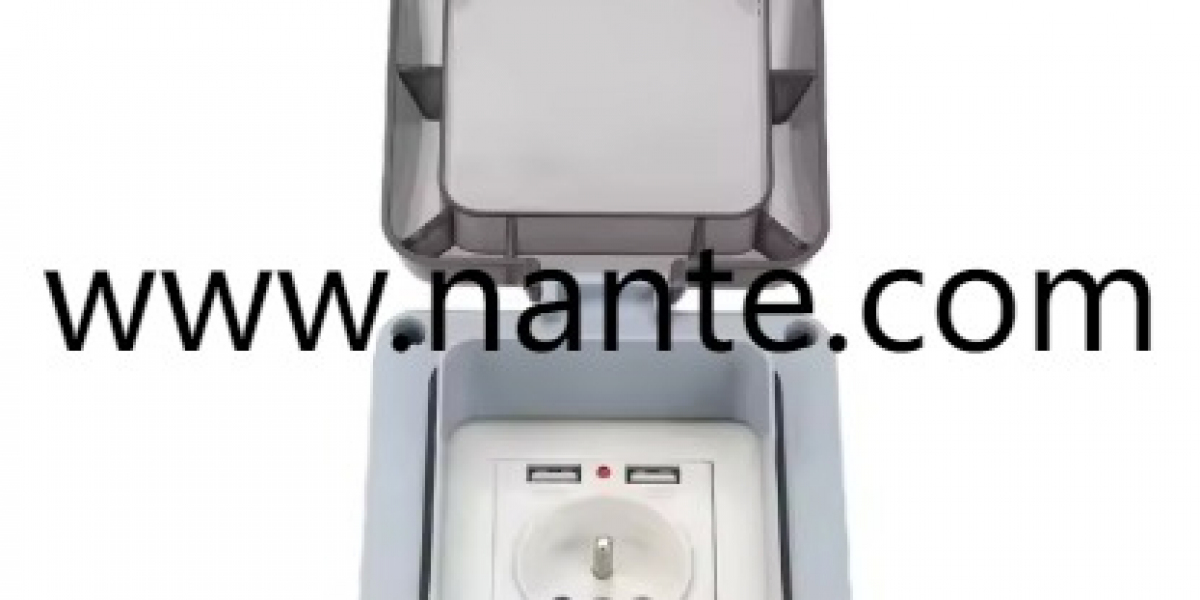When planning power for patios, gardens, and outdoor living areas, choosing the right Outdoor Socket Box can make a big difference in safety and longevity. As more people spend time outside and headlines track shifting weather patterns, the question of waterproof versus weatherproof enclosures keeps appearing in conversations among homeowners and facility teams. Understanding the practical differences helps owners pick a durable unit that matches site exposure and intended use.
Start with what each term implies. A waterproof enclosure aims to keep liquids out even when submerged or exposed to direct splashes for a period. That level of sealing is useful where connectors may face standing water, heavy spray from hoses, or where temporary immersion is possible. By contrast, a weatherproof solution focuses on resisting rain, snow, dust, and sun while allowing limited breathability so condensation does not build inside the cavity. That balance matters when units sit under eaves or on pergolas where they face wind driven rain but are not likely to be submerged.
Material choice affects how either approach performs over time. Corrosion resistant alloys and UV stable polymers handle outdoor exposure without losing structural integrity. Polymer cases reduce weight and avoid rust in coastal locations while treated metal offers added mechanical protection in high traffic yards. Look for housings whose finish matches the placement needs, and consider stainless fasteners where salt air or chemical cleaning may occur regularly.
Seals and entry points are the next important topic. Gaskets, gland plates, and cable compressions form the first line of defense against moisture. A waterproof product uses continuous sealing and tightly clamped glands that prevent water ingress at cable entry points. Weatherproof designs often pair robust gaskets with pressure equalization vents that allow the enclosure to breathe while keeping splashes out. That venting helps reduce trapped condensation which can corrode terminals over time.
Think about serviceability and access. Outdoor nodes that require frequent opening for maintenance or seasonal wiring should use captive screws and hinge covers so technicians can work without losing parts. Replaceable gaskets reduce long term cost because a worn seal can be swapped rather than replacing the entire housing. If the location hosts portable equipment frequently, choose a design with clear labeling and room for neat wiring so connectors are not stressed by repeated handling.
Protection against electrical transients also plays a role in protecting attached devices. Lightning and grid switching events may induce spikes that travel along conductors and damage sensitive controls. Enclosures that accept surge arrestors and separate high energy lines from low voltage outputs help limit damage and simplify repairs when a surge occurs. In neighborhoods where outages and switching events attract media attention, a small investment in suppression components often avoids costly equipment replacement later.
Mounting strategy and siting decide real world performance. Elevating the unit above likely splash zones, orienting edges so rain sheds away from openings, and choosing sheltered mounting spots all extend service life. For ground level installations consider protective skirts or small pedestals that divert run off. For installations near doors and windows follow clearance guidance so inspections and maintenance proceed without obstruction.
Security and locking deserve attention too. Public yards and shared spaces may expose nodes to tampering. Lockable covers and tamper sensors provide a deterrent while offering event managers clarity about who accessed a power point. Whether the installation supports market stalls, landscape lighting, or emergency power for community events, controlled access reduces accidental disconnections and unauthorized use.
Testing and inspection are simple steps that pay off. Regular visual checks of gaskets, terminal tightness, and any sign of corrosion catch small issues before they grow. After heavy storms run a quick functional check to verify breakers and covers behave as expected. Keeping a small kit of spare seals and common fasteners near the site speeds repairs and reduces the chance of temporary fixes that compromise protection.
Cost considerations matter. A fully sealed waterproof model can cost more initially but may save money where flooding is a real risk. Weatherproof units generally balance protection and ventilation at a lower price and suit many residential scenarios where full immersion is unlikely. Evaluate likely exposure rather than defaulting to the highest rating, and match the purchase to real site hazards so money goes where it most reduces downtime.
Finally, align purchase with supplier support and documentation. Clear installation notes, part lists, and guidance about recommended gland sizes remove uncertainty during installation and inspection. For teams planning to standardize on a family of units, compatibility of spare parts simplifies logistics and keeps spare inventories small.
For product choices that combine ingress protection with service friendly design and accessory options, review available models and mounting accessories at https://www.nante.com/product/. The site provides specification notes, installation guidance, and spare part lists to help planners match an enclosure style to site exposure and operational needs. A considered selection ensures a durable installation that supports reliable outdoor power while easing maintenance for years.














